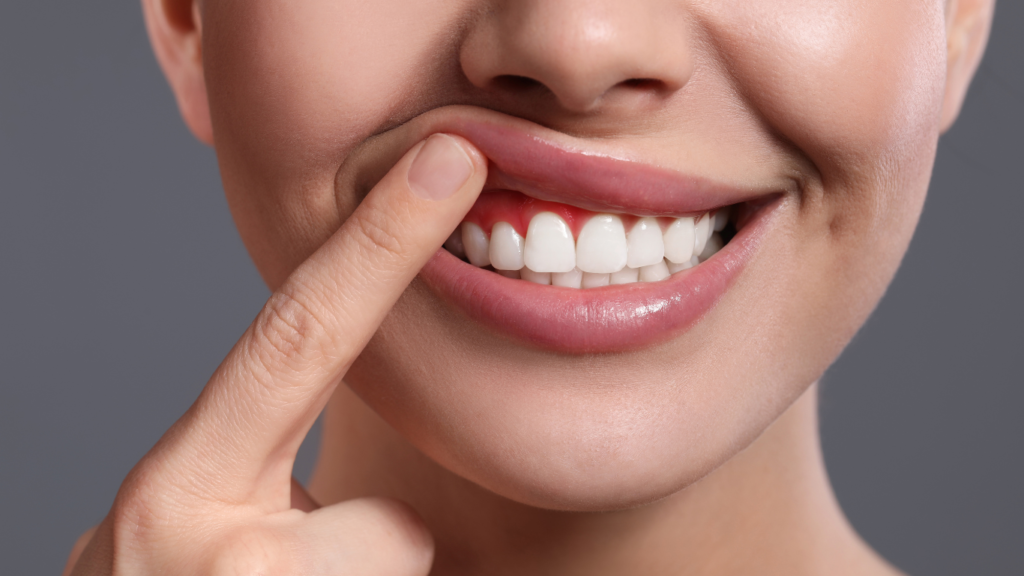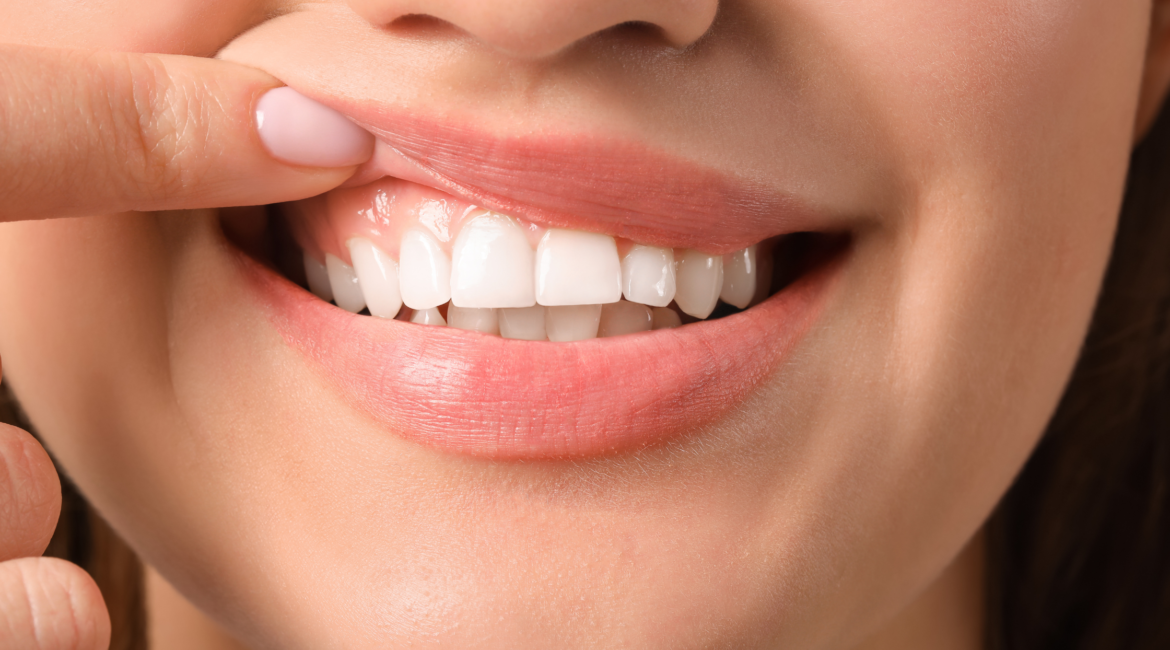Gum disease, also known as periodontal disease, is a common oral health issue that affects millions of people worldwide. According to the CDC, nearly half (46%) of all adults aged 30 years or older show signs of gum disease, while severe gum disease affects about 9% of adults.
While it may start as mild gum inflammation, it can progress to more severe forms and even lead to tooth loss if left untreated.
To help you better understand gum disease, its causes, symptoms, and available treatments, we’ve prepared this informative article.
The four stages of gum disease
Needless to say, severe gum disease doesn’t happen overnight. The breakdown of tissues around your teeth happens gradually.
Most people don’t even experience pain with gum disease, especially during the early stages, which means it’s important to understand how it originates to avoid consequential dental problems.
The four stages of gum disease include:
1. Gingivitis
Gingivitis starts with red, puffy gums that may bleed when you brush or floss. At this stage, there’s no bone loss, so gingivitis is completely reversible with proper treatment.
2. Mild periodontitis
The bacteria have seeped beneath your gums, affecting the supporting bone. Your gums may pull away from your teeth, creating pockets around them. Plaque and bacteria tend to hide in these pockets, where your toothbrush and floss can’t reach.
3. Moderate periodontitis
Left untreated, bacteria begin to erode the ligaments, soft tissues and bone that hold your teeth in place. You may notice bad breath and pus (infection) around your gum line. Pain can develop at this stage.
4. Advanced periodontitis
As periodontal disease worsens, bone loss continues. This can cause your teeth to become loose and eventually fall out.

Causes of Gum Disease
Gum disease is typically caused by poor brushing and flossing habits that allow plaque—a sticky film of bacteria—to build up on the teeth and harden.
Having said that, there are several potential factors at play when it comes to gum disease:
Poor Oral Hygiene
Inadequate brushing and flossing can lead to the buildup of plaque on the teeth, which, over time, can harden into tartar, a more stubborn substance to remove.
Smoking and Tobacco Use
Tobacco products harm gum tissue, making it more susceptible to infection.
Poor Nutrition
A diet lacking in essential nutrients can weaken the immune system, making it harder for the body to combat gum infections.
Genetics
Some individuals may be genetically predisposed to gum disease, meaning it can run in families.
Medical Conditions
Certain medical conditions such as diabetes, HIV, and cancer can increase the risk of gum disease.
Symptoms of Gum Disease
Detecting gum disease in its early stages is crucial for effective treatment. Common signs and symptoms include:
Gum Inflammation
Swollen, red, or bleeding gums, especially when brushing or flossing, are early indicators of gum disease.
Persistent Bad Breath
Chronic bad breath, also known as halitosis, can be a sign of gum disease.
Gum Recession
Your gums may begin to pull away from the teeth, making them appear longer.
Tooth Sensitivity
Gum disease can lead to increased tooth sensitivity, particularly when consuming hot or cold beverages.
Pus Between Teeth
The presence of pus or discharge between teeth or along the gumline is a more advanced sign of gum disease.
Loose Teeth
As gum disease progresses, teeth may become loose or shift in position.
Pain or Discomfort
Pain while chewing or persistent discomfort in the gums should not be ignored.
Treatment methods for Gum Disease
The good news is that gum disease is treatable, especially when detected early. The treatment approach will depend on the severity of the condition:
Professional Dental Cleanings
Regular dental check-ups and cleanings are vital for removing plaque and tartar buildup.
Scaling and Root Planing
In more advanced cases, a deep cleaning procedure known as scaling and root planing may be recommended to remove bacteria and smooth root surfaces.
Antibiotics
Your dentist may prescribe antibiotics, either as a mouthwash, gel, or in pill form, to control bacterial infection.
Surgical Procedures
In severe cases, surgical interventions like flap surgery or bone grafts may be necessary to repair damaged bone or gum tissue.
Lifestyle Changes
It’s important to adopt a good oral hygiene routine, including regular brushing, flossing, and the use of an antiseptic mouthwash. Smoking cessation and a balanced diet also play a crucial role in preventing gum disease.

Preventing Gum Disease
Prevention is always better than cure. Here are some steps you can take to reduce your risk of developing gum disease:
Maintain a Consistent Oral Hygiene Routine
Brush your teeth at least twice a day and floss daily to remove plaque and food particles.
Visit Your Dentist Regularly
Dental check-ups and cleanings every six months are essential for early detection and treatment.
Quit Smoking and Tobacco Use
Eliminating tobacco products from your life can significantly lower your risk of gum disease.
Eat a Balanced Diet
Consume a diet rich in fruits, vegetables, and whole grains to support your overall oral health.
In Conclusion
Gum disease is a common and potentially serious oral health issue, but with early detection and proper care, it can be managed effectively.
If you suspect you may have gum disease or haven’t had a dental check-up in a while, don’t hesitate to schedule an appointment with your dentist. A healthy smile begins with healthy gums!
Modern Day Dental | St. Johns, Florida
At Modern Day Dental, we are committed to using the latest techniques and technologies taught by the most respected clinicians in the world, with a particular emphasis on cosmetic dentistry and digital technology.

